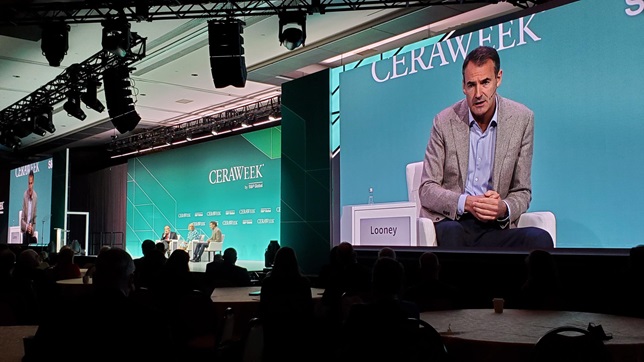Technology will be the key.
It was made abundantly clear from day one speakers during CERAWeek that action is needed NOW for the energy industry to address climate change. Though it wasn’t necessarily clearly stated how that was going to happen. Over the course of the past two to three days, we have a better understanding. It will all come down to focus, innovation and investment.
Bernd Heid, Senior Partner of McKinsey put it into perspective, “Two-thirds to three-fourths of decarbonization will be solved by technology” and further noted that “to solve for that will be a synchronization of the public and private agenda.” Darren Woods, CEO of Exxon Mobil echoed the sentiment that, “Technology solutions are key, especially in high carbon areas.”
We are seeing this happen across so many companies:
Giulia Chierchia, Executive Vice President of Strategy, bp laid out the five transition growth engines for the company – bioenergy, convenience, EV charging, renewables and hydrogen – that will take them not only to net-zero by 2050 but will also generate billions of dollars in revenue.
María Victoria Zingoni, Executive Managing Director, Client and Low-Carbon Generation at Repsol took it even further, explaining that after Repsol announced their plans to go net-zero back in 2018, they received an increase in public support, including the benefit of becoming a more attractive place for employees to work.
And several companies laid out their plans to start or accelerate emerging business units that will integrate new technologies to remove carbon: Exxon Mobil’s Low Carbon Solutions Business; Petronas establishing an independent entity focused on clean energy; Hess investing in nature-based solutions such as crops. The tools that reverse CO2 are the ones that need to be developed and we are seeing the focus shift.
Digitalization will be a big part of all these plans. As speed to market becomes more important to implementing these innovations, unlocking the power of the cloud will become a growing part of the solution. Amazon Web Services (AWS) CEO Adam Selipsky demonstrated how energy companies such as Octopus Energy and P66 are using the cloud for cost savings, better supply chain control and better customer service. “The cost of innovation and experimentation will go down” for companies that use the cloud and who “put data at the center of everything.”

John Doerr, Chairman of Kleiner Perkins presented a 10-point action plan for solving the climate crisis. This included components that we have become used to seeing such as “Decarbonize the Grid” and “Electrify Transportation,” but he took it further by putting into place 55 measurable and actionable strategies required to make it happen. As he put it, “the key is to have a plan, not just goals.”
Even with these plans, there still is a tremendous amount of work to do and the investment is steep. According to Bob Dudley, Chairman of OGCI the transition to clean energy will cost $4 trillion USD a year, for 40 years. The reality, as Sunita Narain, Director General for the Centre for Science and Environment stated, is that “we’ve run out of carbon space.” The buffer as we head into goals for 2030, 2040, 2050 is gone, but seeing pragmatic plans put into place this week provides hope that a collective effort is possible.
On the evening of CERAWeek Day 4, at Houston’s NRG Stadium, just a stone’s throw from the CERAWeek venue, the band Journey played to a crazed, sold-out crowd. Their iconic lyric, 'Don't Stop Believin' has never been more welcome or encouraged!




Leave A Comment